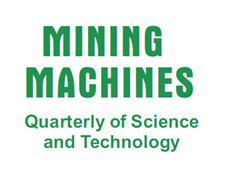Joachim Kozioł, Piotr Matusiak
Monografia nr 32
Gliwice 2010, s1-76, il.,bibliogr.
ISBN 978-83-60708-44-6
Utylizacja odpadów jest jednym z najważniejszych zadań współczesnej cywilizacji. Istnieją poważne przesłanki wskazujące na proces spalania jako na technologię, która ma szansę na pozytywne rozwiązanie tego ważnego cywilizacyjnego problemu.
Spalanie odpadów stwarza jednak szczególne trudności z powodu niestabilnego składu odpadów lub w przypadku współspalania nierównomiernego rozkładu odpadów w mieszaninie. W takich warunkach, aby spalanie było zupełne, całkowite i niskoemisyjne układ regulacji musi szybko dostosować odpowiednie parametry powietrza, głównie ilość i rozdział powietrza, przy danych parametrach spalania.Guma z opon samochodowych jest odpadem, który może być wykorzystany jako paliwo w procesach energetycznych lub jako substancja redukcyjna w hutnictwie lub w cementownictwie. Dokładne poznanie zjawisk zachodzących przy spalaniu węgla z dodatkiem odpadów gumowych wymaga badań laboratoryjnych, a często również koniecznych badań przemysłowych.W pracy wyznaczono charakterystyki ekologiczne i energetyczne określające wpływ parametrów procesu na emisję oraz entalpię spalin. Zajęto się istotnym problemami występującymi przy współspalaniu węgla z odpadami gumowymi, między innymi udział tych odpadów w paliwie, grubość warstwy paliwa na ruszcie, jak również rozkład w czasie (na długości rusztu) strumienia powietrza.Badania z tego zakresu, ze względu na ich znaczenie są często podejmowane, lecz złożoność problemu jest tak duża, że istnieje w tym zakresie nadal wiele niewyjaśnionych problemów szczegółowych.
Power and ecological effects of hard coal burning with rubber wastes
Wastes treatment is one the most important problems of modern civilization. There are reasons that incineration process can be a technology that solves the wastes problem. However incineration of wastes is problematic due to unstable composition of wastes as well as not even distribution of wastes in the incinerated mixture. In such a situation the control system should quickly adjust air parameters, mainly amount of air, to a changeable composition of wastes to make incineration complete with low emission.
Rubber from used tyres is a waste that can be utilized as a fuel in burning processes or as a reducer in metallurgy and cement industry. Laboratory tests as well as industrial tests are required to get knowledge about phenomena that occur during burning of coal with admixture of waste rubber.
Ecological and power characteristics that determine impact of burning process parameters on emission of gases and enthalpy of emitted gases were determined. Problems in co-incineration of coal with rubber wastes like: rubber wastes content in a fuel, fuel thickness on a grate and air stream distribution (along the grate length) were discussed.
Such tests are often carried out, but complexity of the problem is so high that still there are many problems that are not clear enough.





 Badanie bezpieczeństwa wyrobów
Badanie bezpieczeństwa wyrobów Klaster Maszyn Górniczych
Klaster Maszyn Górniczych